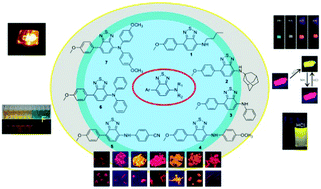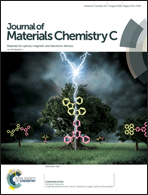Expression of anti-Kasha's emission from amino benzothiadiazole and its utilization for fluorescent chemosensors and organic light emitting materials†
Abstract
Various amino benzothiadiazoles (Am-BTDs) are synthesized and their photophysical properties in different states (solution, film, crystal, and powder) are investigated. Unusual anti-Kasha's emission is observed for those compounds with a strong electronic coupling effect between the donor and the acceptor which directly results in the white emission of those compounds in dilute solutions. Among these Am-BTDs, some of them can be utilized as fluorescent chemosensors in sensing gaseous ammonia, and some of them can be developed for detecting fluoride anions with high selectivity and high sensitivity. Moreover, aggregation caused quenching is not observed for these compounds in the solid state. They are emissive in films, crystals and powders with high color purity and moderate efficiencies. The emission color could be tuned from yellow to red according to the varying amino groups. Furthermore, they can be used as an emissive layer in organic light emitting diodes.

- This article is part of the themed collection: 2018 Journal of Materials Chemistry C HOT Papers


 Please wait while we load your content...
Please wait while we load your content...